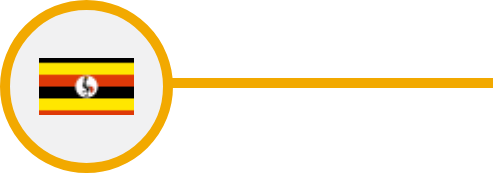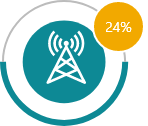BACKGROUND
According to WHO estimates, 90,000 people newly developed TB in Uganda in 2020 of which 62,526 got notified (Global TB report, 2021) [1] . With nearly 30,000 of all people with TB also infected with HIV, Uganda is included in the list for the top 30 TB/HIV high burden countries. [2] Children account for nearly 12% of all cases, and many also suffer from TB-HIV coinfection
These numbers have been on a steady decline for the last decade [1] . In line with WHO’s End TB strategy, Uganda has achieved a treatment coverage of 68% of all people living with TB in 2020 and the TB case fatality rate stands at 19%. 34% of the children (aged < 5 years) that are household contacts of bacteriologically-confirmed TB cases have also been put on preventive treatment.
Affected by the COVID19 pandemic, country’s TB case notification dropped in 2020, however, in 2021, the health system is making efforts to revive its TB surveillance practices and the notification has improved to reach above the 2019 average quarterly notification trend.
In order to achieve the key milestones, the National Tuberculosis and Leprosy Control Program (NTLP) , through its National Strategic Plan (NSP) 2021-25, aims to reduce TB incidence by 20%, with focus on areas, such as, strengthening community systems for high-risk populations and scaling-up TB preventive therapy (TPT); enhancing the public-private collaboration; adoption of new technologies; supporting digital information management; and multi-sectoral collaboration and resource mobilization for TB. [3]
Recent modifications in the TB reporting protocol have been highly instrumental in giving direction towards capturing more comprehensive data and paving way for the incremental implementation of case-based reporting from facilities. For instance, the system originally notified patients upon start of treatment (using a National Identification Number or NIN), however from 2020 the patient is notifiable at the time of diagnosis. The NTP now identifies the location of diagnosis of a patient and shares information in an aggregated format.
The DHIS2 aggregate data model based national TB surveillance system is supported by the Global Fund and CDC (as well as PEPFAR and WHO for HIV/AIDS programs), and for technical support around DHIS2 customization, HISP Uganda and the WHO HQ continue to offer technical guidance. This system is built as a component of the National HMIS platform.
In parallel to their COVID-19 response, Uganda’s MOH has collaborated closely with the national TB program to enable the DHIS2 tracker (eCBSS – Electronic Case Based Surveillance System – TB and Leprosy) across 100 facilities. While the data is owned by the ministry of health (MOH) and is hosted in MOH servers, the NTP has enabled the case-based data collection at 100 health facilities and aggregated data management continues for the remaining sites for both DR-TB and DS-TB cases. Additionally, to complement the existing national HMIS data systems, the TB Data from DHIS2 can easily be integrated as indicators which enable comprehensive data review and analysis of TB data nationally.
It is empirical that technology penetration plays a vital role in enabling the evolution of information systems from paper to digital solutions. As per 2021 figures, about 168.5% of the population has a cell phone, and more than 91.2% use smartphones (2019). Internet penetration further stands at decent figures (i.e., 64%) in the country. It is thus a good opportunity to strengthen stakeholder coordination and leverage the friendliness of South Africa’s population with digital tools, which can set a strong ground to implement advanced digital solutions and ensure adequate uptake.
Based on the multi-stakeholder discussions, interviews and independent research, and guidance from the National TB Program, this assessment report is an attempt to describe the current capacity and identified gaps/ challenges in the digital ecosystem of TB surveillance. The report shares strategic recommendations for developing a comprehensive case-based surveillance system in the country while leveraging the existing infrastructure, in-house capacity, and assets. Detailed recommendations are provided in the later section of this country report.

STATUS OF CASE BASED TB NOTIFICATION
In 2020, Uganda adopted DHIS2 as the national system for a weekly reporting of TB notification data. This has helped the national program to monitor TB diagnosis cascade at facility level, and the platform has further developed over the last 2 years to introduce a Case based tracker system, which is being piloted at 100 facilities currently. All the 15 RRHs (Regional Referral Hospitals) are also included in this pilot, and the data is directly collected in eCBSS platform.
This system has an integrated dashboard that aggregates the data on weekly basis and automatic reports are generated for analysis.
The national TB notification system allows management of both DR-TB and DS-TB cases.
The data is first maintained in manual registers offline, and then transformed to digital form by reporting aggregate data in DHIS2 (case-based data from pilot sites) either from the facility directly or entered from the district level where infrastructure is inadequate at facilities.
Since 2020 Uganda’s NTP and MOH have collaborated closely (during the COVID pandemic) to notify patients at the time of diagnosis itself (i.e., not after treatment initiation) by linking a National Identification Number, and thus capturing data of the entire cascade of care. NTP now identifies the location of diagnosis of a patient and shares information in an aggregated format.
The use of the offline provision of DHIS2 android capture app in the implementation of the Electronic Case-based surveillance system (eCBSS) pilot is noteworthy in tackling the challenge of internet connectivity at the remote facilities and outreach. The same is further being explored for supporting the health workers in contact tracing activities on ground.

ELECTRONIC TB NOTIFICATION DATA COLLECTION AND USE
| TARGET | CURRENT SCALE | COLLECTION TOOLS | DATA TYPE | DATA USAGE | |||
|---|---|---|---|---|---|---|---|

National Level
|
Data Not Collected at this level
|
DHIS2 Dashboard |
|||||

Regional
Level
|
15 (RRHs) | 15 | DHIS2 Tracker – eCBSS pilot | Case-based | DHIS2 Dashboard | ||

Districts and
Cities
|
148 | 148 | DHIS2 | Aggregated | DHIS2 Dashboard |
||

Facility level
|
1700 | 100 – eCBSS 1600 – Paper based/DHIS2 | DHIS2 Tracker – eCBSS pilot sites, DHIS2 Aggregate at other facilities | Case-based, Aggregated | DHIS2 Dashboard | ||

Community Level
|
Pilot sites | 15 | DHIS2 Android Capture app | Case based (contact tracing) | No Data usage at this level | ||

CASCADE OF CARE MONITORING
PRESUMPTIVE SCREENING
TB Testing
Treatment Initiation
Treatment Monitoring
Treatment Outcome
Contact Tracing






| KEY DATA VARIABLES | Yes/No |
|---|---|
| Demographic details (Age, DOB, Gender) |

|
| Address and contact details (Country, Division, District, House address) |

|
| Geolocation (GPS coordinates of the household) |

|
| Contact details (Phone number/Mobile number, WhatsApp, Email etc.) |

|
| Health Facility address |

|
| Type of health facility (Public, Private etc.) |

|
| Site of TB (Pulmonary, Extra-pulmonary) |

|
| Type of diagnostic test (Microscopy, GeneXpert, TruNaat, CXR, etc.) |

|
| Date of test result |

|
| Drug susceptibility (DSTB, DRTB) |

|
| Treatment Regimen |

|
| Treatment start and end date |

|
| Co-morbidity (HIV, Diabetes, COVID-19 etc.) |

|
| Treatment monitoring/adherence |

|
| Treatment outcomes |

|
| KEY INDICATORS | Yes/No |
|---|---|
| Presumptive screening (proportion) | |
| Treatment initiation (proportion) |

|
| Treatment monitoring/adherence |

|
| Treatment outcome (proportion) |

|
| Spatial distribution of TB notification |

|
| Age-group & sex wise aggregate numbers and proportions notified |

|
| Basis of diagnosis wise aggregate numbers and proportions notified |

|
| Type/site/drug resistance wise aggregate numbers and proportions notified |

|
| Provider source-wise aggregate numbers and proportions notified | |
| Comorbidity wise aggregate numbers and proportions notified |

|
| Key-population wise aggregate numbers and proportions notified |

|
| Estimate/Target wise notification/treatment coverage (proportions) |

|
| Provider-type disaggregated treatment outcomes (proportions) |

|
| Comorbidity disaggregated treatment outcomes (proportions) |

|
| Key population disaggregated treatment outcomes (proportions) |

|
 Digital
(aggregated)
Digital
(aggregated)
STATUS OF ELECTRONIC CASE BASED TB SURVEILLANCE
Electronic System For Case Based TB Notification
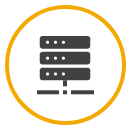
DHIS2 tracker (eCBSS) – 100 facilities; remaining 1600 report aggregate data
Lowest Unit For TB Notification Digitisation
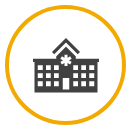
Facility level
Stage Of Notification

Diagnosis stage
Level Of Access And Use Of TB Notification Data
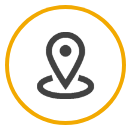
Facility level (and above)
Private Sector Notification
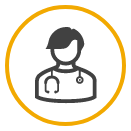
Manual notification process – Data submitted to sub district level for data entry
Frequency of digitization of TB notification

Aggregate – Weekly to quarterly eCBSS – Real-time
Mode Of Follow-Up With Notified Cases
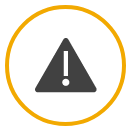
Physical visits
Scale Of Implementation
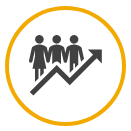
National roll out
Contact Tracing For TB Notified Cases
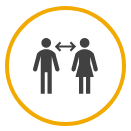
DHIS2 tracker pilot
Multi-Channel Enablement
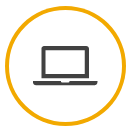
Use of DHIS2 Android capture mobile app for eCBSS data entry
Govt. order for mandatory TB notification
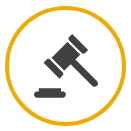
Yes
PRIVATE SECTOR NOTIFICATION

Private sector partners enrolled under the national TB program align with electronic notification of aggregated TB data. Private providers outside the NTP support efforts through a manual notification process.
COUNTRY IT CAPACITY
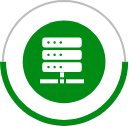
Country Server
The DHIS2 platform is hosted managed by the Ministry of Health
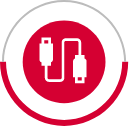
Interoperability
DHIS2 as a platform provides APIs for interoperability, but yet to be integrated with other tools
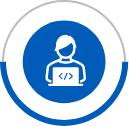
Country IT team
NTP has an in-house IT team, but the system support is taken from HISP Uganda and MoH.
CURRENT RESOURCES AVAILABLE
Uganda’s NTP reports some availability of infrastructure at the time of development of the electronic case based surveillance system.
So far about USD 200,000 has been used to develop the system, conduct national site visits, develop and disseminate resource material, train health workers at 100 facilities and conduct supervision.

MILESTONES ACHIEVED AND ROAD MAP
2017
DHIS2 tracker pilot testing for 17 facilities, specific to DR TB case notification
2012
Data entry in eTB manager scaled to 30 sites
2019-20
Development of weekly aggregated reporting DHIS2 dataset DHIS2 tracker use for DR and DS TB cases (17 facilities)
2020
Implementation and scale up of DHIS2 weekly aggregate reporting to all health facilities
2021
Expansion of DHIS2 tracker (case based) reporting for both DS and DR TB surveillance system to 100 facilities
2018
Transition from paper-based to electronic system with quarterly DHIS2 aggregate data reporting
2022
Interoperability with other programs and tools Automatic notification and alerts Scale of DHIS2 tracker to 800 facilities (mobile and web based)
2023
Scale up of DHIS2 tracker to all 1700 facilities

OTHER COMPLEMENTING DIGITAL TOOLS
| Purpose | Tools | Channel | Developed By | Supported By | Scale |
|---|---|---|---|---|---|
| Digital Adherence | Video DOTS | Web applicationn | ZMQ | Information not available | Pilot |
| 99 DOTS | Mobile application | Everwell | TB Reach Wave 8, 9 | Pilot | |
| Logistic Management | DHIS2 dataset | Web Application | HISP Uganda | The Global Fund | Nationa |
| Laboratory Information Management | DHIS2 dataset | Web Application | HISP Uganda | The Global Fund | National |
| GeneXpert | Web Application | Cephield | Information not available | National | |
| Community Led Monitoring (CLM) | Toll Free Call center | Telephonic | Ministry of Health | Ministry of Health | National |
| Contact Tracing | DHIS2 tracker | Mobile application | HISP Uganda | The Global Fund, | Pilot |

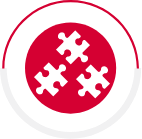

KEY CHALLENGES

Digital infrastructure: Uganda’s current IT infrastructure at sub-national level and at the facilities is inadequate for further scale up beyond the current 100 facilities, and the related funding also faces a shortage.

Training manpower: Expanding the case based electronic TB surveillance system would increase data entry burden and requires training of health professionals at all planned 1700 facilities. With the current HR availability at facilities, trainer manpower for data entry is an immediate need.

Internet availability: Its unreliability affects data entry and analysis even in the initial 96 facilities. Scaling up to more disconnected and marginalised community areas will require political will and investment.

Interoperability: Program is currently unable to generate data from GeneXpert system due to the high costs of integration, hence the utilization of GxAlerts is not at par.

Legacy data migration and backlog: Scale up of eCBSS to all facilities would result in significant data entry backlogs and NTP’s current capacity is insufficient to handle this additional load.
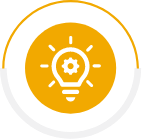
NTP VISION
- ❖ As part of the National Strategic Plan for 2020/21-2024/25, the NTP envisions point-of-care data collection, enabling real time actionable information management. [3]
- ❖ Uganda’s NTP also plans to expand the electronic case based surveillance system (eCBSS) on a national level to all 1700 health facilities across the country. This will require infrastructure investment, training programs and political commitment.
- ❖ Establishing a real time access to data for the stakeholders.

RESOURCES NEED
Based on multi-stakeholder discussions, country feedbacks and recommendations for full-filling country’s vision, we have put together an estimated investment requirements and areas needing support for provisioning of a comprehensive case based digital TB surveillance system
Hardware and Infrastructure :

Mobile Devices (for data collection)::Uganda has 1700 facilities and to provision mobile device for every facility for case-based TB surveillance, USD 255,000 will be needed assuming USD 150 per mobile devices.

Tablet (for data use): : Uganda has 135 districts and 15 regions and to promote active data use, each district and region should be given a tablet which would cost roughly around USD 30,000 assuming USD 200 per Tablet devices.

Internet: In case WiFi is not available in each facility, then mobile internet cost of around USD 555,000 should be considered (assuming USD 100 mobile data cost for the entire year per facility, district and regional user).

Server: Based on the current volumes of new cases, South Africa would need an investment of USD 15,000-20,000 for next 3 years for server and server maintenance.
Note: Existing devices available through other health programs can be leveraged. In that case, the above-mentioned costing can be accordingly considered.
Software Development :

Based on various multi-stakeholder meetings and given the fact Uganda already have a strong foundation for DHIS2 aggregated system for TB, around USD 500,000- 750,000 should be budgeted for a comprehensive TB surveillance system and analytical dashboard for data use.
Capacity Building and Implementation :

After the software development, a dedicated pool of technical resources will be needed to support platform administration, data management and support. A team of 4-6 skilled resources attributing to a cost of around USD 120,000-180,000 per annum should be budgeted (or USD 360,000-540,000for 3 years assuming USD 1,000 per month per resources). Additionally, reskilling of the current IT team should be budgeted.

Training:This would involve training material development and onsite and remote training of the trainers. Ttraining sessions should be planned for each 135 districts over a period of 3 years which could cost roughly USD 100 per training amounting to USD 13,500, which will be further supported with e-Learning packages. Also, a dedicated trainer should be budgeted in case there is none.
TOTAL investment of around USD 2.5 – 3.0 million for 3 years will be needed for further strengthening and maintaining a comprehensive case-based digital TB surveillance system in Uganda.
Disclaimer: The above budget is a function of number of facilities, districts and regions and expected volume of data. This only provides a ballpark figure of what is needed in terms of budget.

Recommendations
Following are some of the key recommendations suggested based on the findings of this assessment of country’s digital ecosystem and infrastructure:

Strategic Costing Plan
As a first step it is important for the country to create a comprehensive costed action plan for development, implementation and scale up of the TB case-based surveillance system.
Based on NTP’s vision and the recommendations for improvements, the plan should clearly define targets with actionable interventions and funding requirements supported with a detailed work plan along with timelines. The plan will help the country to assess and monitor the progress to ensure that any risks can be duly mitigated.
Tentative timeline: Month 0-1

Implementation and scale of TB Case Based Notification systems
With the help of HISP Uganda the NTP has already established DHIS2 environment which has the core infrastructure in terms of database and deployment environment. It has built the DHIS2 expertise and capacity which acts as a strong foundation for executing the vision of implementing a comprehensive and integrated real-time case-based TB surveillance and notification system.
It is recommended that this existing capacity is leveraged for expanding the DHIS2 tracker app. While the current tracker has been planned to cover the details for creating case-based notification system for both DS TB and DR TB patients , the application should also include monitoring of entire continuum of care including presumptive screening, referral, treatment initiation, treatment adherence, treatment outcome and contact tracing in real-time.
The solution architecture should support adding all the above components in phases supported with versioning to ensure seamless upgrades and continuity.
Some of the existing templates already built on DHIS2 tracker systems currently being used by other countries such as WHO’s prevent TB tool or other DHIS2 tracker-based systems can be explored for fast-tracking the software development processes. [6]
Tentative timeline: Month 0-12

Mobile App
One of the challenges reported by the NTP during the data collection processes is the lack of availability of real time data for stakeholders. One effective way to overcome this is to support the current data collection processes by introducing a mobile application, which is in line with the country’s efforts of improving the overall digital ecosystem.
As a recommendation, the latest DHIS2 mobile app version (already being piloted by Uganda for eCBSS and contact tracing from outreach) which has additional features on data collection, security, offline data collection, encryption ,version management etc should be extended for use even for aggregate data reporting, specially from facilities with limited IT infrastructure should be reviewed.
This would also ensure that the data structures are consistent. Also, the app is supported with a configurable set up to support any updates / changes to the program.
Additionally, the DHIS2 mobile framework uses open-source technologies like Java, Postgres, React and Android, there are easily supported by country IT teams also the standard best practices of mobile development like version management, data encryption etc which make this as more robust solution. [6.1] [6.2]
Tentative timeline: Month 6-12

Device Procurement
One of the limitation highlighted by NTP is the need to improve the data collection processes at the facility level. To streamline this, procurement, distribution and maintenance of the required data entry equipment like laptops, mobile/tablet devices should be done on an urgent basis. Improving the current infrastructure at the facilities is crucial for a complete transition to digital notification.
Tentative timeline: Month 0-6

System Integration
One of the challenges highlighted by NTP is the leveraging the data collected from the multiple sources into the main DHIS2 systems as a central system for effective use.
The current EDRWeb / TIER.Net system infrastructure needs to be extended to support bi-directional integration and interoperability with external systems like National EHR, NHLS, GeneXpert, TruNat, Digital X-Ray outputs, Pill boxes and other adherence tools which help in using the data effectively for the patient continuum of care as highlighted by the National program.
Recommended exchange / ETL tools like Talend and Informatica can make the data management task much easier and simultaneously improve data warehousing. [8]
The data exchange process should follow and comply with FHIR , GDPR standards for more secured and seamless data exchange supporting standard data taxonomy and meta data management processes.
The DHIS2 platforms architecture is easily compatible with these standard tools and processes making this an effective solution. [8.1] , [8.2]
Tentative timeline: Month 12-18

Data Use
Advanced dashboard analytics to strengthen the current Monitoring and Evaluation framework.
The NSP 2021-2025 clearly emphasizes on the importance and need for improve data use. This can be made possible by making case-based TB data and patient line listing available at the lowest level health functionary involved in TB care
Building on the current DHIS2 visualization module which offers a comprehensive dashboard for reviewing of program and data indicators, additional features of pivot table , event reports which support dimensions , data aggregation reports and individual line lists and with timeline views are extremely useful.
Once a robust data analytics and data use model has been established with the current DHIS2 and other systems then a more advanced analytical dashboard should be designed linked to the new case-based TB. To achieve this , and to strengthen and expand the data visualisation scope and making effective use of data for predictive modelling, data science and for advanced analytics it is also recommended to use best of the breed tools like Tableau , Power BI which offer these features. The current DHIS2 platform offers APIs which can connected for these applications and be used as an extended analytical component of the data analysis framework. [9]
Tentative timeline: Month 6-18

Capacity building for application maintenance
One of the main challenges highlighted by the NTP is the ongoing maintenance and enhancements of the platform. Since the application requires regular updates and to ensure effective adaptation and scale up the system support team requires trained personnel on DHIS2.
Strengthening the NTP team with trained system administrators will help in reducing costs (in seeking technical support) and improving and expediting the planned implementations.
Tentative timeline: Month 0-6

Contact tracing application implementation
To strengthen the TB surveillance efforts of the country and for reaching out to all TB positive individuals, an active focus on contact tracing becomes crucial. The standard guidelines for household screening can be incorporated as a module in the national TB notification tool and be implemented to fast track the country’s efforts to eliminate TB and target the initiation of preventive treatment for all TB contacts.
Tentative timeline: Month 6-12

Additional Systems
To make sure that paper based patient records data is integrated with the DHIS2 tracker systems technical solutions like OCR [10] can be reviewed.
The DHIS2 platform supports reading from these structures. This would help in data upload of all historical data with less difficulties.
Tentative timeline: Month 6-12

E-Learning
Digital training packages to train health professionals on DHIS2 data entry, information use, M&E and workflows:
To address the challenges with periodic training of facility level staff to orient them on using TIER.Net and EDRWeb for real time data reporting, the MoH must engage in development of an eLearning module for application training.
While DHIS2 offers standard training modules on the application , training tools like Moodle [7] built on standard Learning Management System ( LMS ) framework should be reviewed for application rollouts.
Additionally, for training and updates on the latest manual of procedure and continued medical education on TB care, modules can be developed for TB Health providers, administrators at facility and district level to develop and enhance M&E competencies for ensuring a consistent program oversight, specially for the case-based tracker roll out within the existing applications.
Guide TB platform developed by WHO Philippines is a good example of eLearning module for health staffs involved in TB care.
Tentative timeline: Month 0-3

Patient Interactive Systems
Tracking lost to follow-up cases and enabling real time notifications for patients is highlighted as one of the main challenges. Establishing a direct and secured mechanism for engaging with patient has potential for drastic improvements in tracking lost to follow-up patients.
Auto generation of notification and messaging by the system through communication channels like Social Media channel, IVRS and SMS outbound messages should be explored. Open-source applications like Open MRS can be used for these activities. [11]
Tentative timeline: Month 12-24

Strategic Technical Recommendations
Application Upgrades including Server Augmentation & Infrastructure Upgrades : To make sure that systems implementation and scale up of application is supported well, the key need is to have a long-term strategic plan that would cover the technical and operational objectives.
The strategy recommended would cover the following core areas
✓ Technical Upgrades: Based on the architecture, the upgrade would be done with the database, a middleware system, the operating system or the hardware.
Additionally, the architecture should support the integration layer which would be needed for data exchange with other national / external systems. The technologies that need to be brought in and the areas of inter-connection need special focus.
Recommended data system architecture would include updating the version of the current DHIS2 to 2.34 which offers better features on data management , encryption and exchange standards.
Apart from this version 2.34 also supports compliance to GDPR standards and offers more controlled data encryption practises. [12]
✓ Performance Optimisation & Testing : To support the national scale up and implementation strategies it is very essential to have system(s) and application testing done to enable a reliable platform and which also helps in architecture updates and augmentation.
While core teams from the user community who are involved in the testing learn and automatically get trained, Automated System and Application Testing tools like Selenium and Appium may be considered. Load Testing tools which helping in data base sizing and planning need to be adapted for effective planning. [13]
✓ Application & System Security Audit
To strengthen the current systems framework and ensuring long term sustenance it is important to have regular evaluation of the security of the information and systems by measuring how well it conforms to an established set of criteria.
These would also include developing a framework which should outline policies in line with recommended standard policies like HIPAA [14.1] , [14.2] to cover
• Patient Data Management
• Server & Infra guidelines
Apart from application measures offered by offered by DHIS2 [14] for patient data security , hosting solutions offered from Azure also cover these as part of their deployment options which can be considered as part of systems hosting. [15]
ACKNOWLEDGMENT
We thank the National TB Program Manager Dr. Stavia Turyahabwe and the entire team for participating and engaging in the assessment. We would also like to extend our gratitude to Dr. Robert Majwala for providing valuable insights into Uganda’s vision for creating a comprehensive case-based TB surveillance and notification system.
CONTACT DETAILS
TUBERCULOSIS AND LEPROSY
CONTROL
DIVISION,
Plot 6, Lourdel Road, Nakasero P.O Box 7272,
Kampala Uganda
Telephone : +256 417 712260
Email : info@health.go.ug
REFERENCES
- TB Data References : http://www.stoptb.org/resources/cd/UGA_Dashboard.html.
- TB Data References : http://www.stoptb.org/countries/tbdata.asp.
- TB Data Reference : https://www.usaid.gov/sites/default/files/documents/uganda_Narrative_TBRM21_TBDIAH_Version_Final.pdf.
- Digital Landscape : https://www.gsma.com/mobilefordevelopment/wp-content/uploads/2019/03/GSMA_Connected_Society_Uganda_Overview.pdf
- Digital Landscape : https://datareportal.com/reports/digital-2021-uganda?rq=uganda
- DHIS2 Meta Data Tools : https://dhis2.org/metadata-package-downloads/#tb
- System Integration Tools ( Talend , Informatica ) : https://www.talend.com/index.php, https://www.informatica.com/
- DHIS2 Power BI : https://community.dhis2.org/t/dhis2-to-powerbi-connector-is-ready-check-out-the-video-test-it-use-it-and-give-us-feedback/37043
- Application Training Tool : https://moodle.org/
- DHIS2 Mobile App : https://dhis2.org/android/
- Features of DHIS 2.34 : https://dhis2.org/overview/version-234/
- Performance Tools ( Selenium , Appium ) : https://appium.io/, https://www.selenium.dev/
- HIPAA Compliance Framework : https://www.hhs.gov/hipaa/for-professionals/security/laws-regulations/index.html, https://www.hipaajournal.com/considered-phi-hipaa/
- DHIS Security: https://dhis2.org/security/
- Azure Hosting Services : https://docs.microsoft.com/en-us/azure/compliance/offerings/offering-hipaa-us
